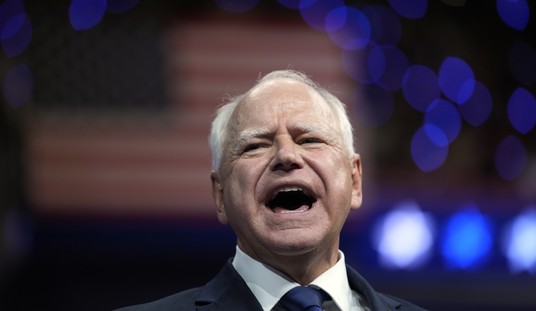Who’d have predicted this? Just about everyone, as Josh Trevino reminded us last night:
https://twitter.com/jstrevino/statuses/236292502808846336
After imposing a drilling moratorium in the Gulf in defiance of a court order, blocking oil exploration and extraction on both coasts, and then killing the Keystone XL pipeline to Canada’s oil fields, the US has grown more dependent on Saudi Arabia for its oil needs. Color me shocked, shocked … and the New York Times a little clueless:
The United States is increasing its dependence on oil from Saudi Arabia, raising its imports from the kingdom by more than 20 percent this year, even as fears of military conflict in the tinderbox Persian Gulf region grow.
The increase in Saudi oil exports to the United States began slowly last summer and has picked up pace this year. Until then, the United States had decreased its dependence on foreign oil and from the Gulf in particular.
This reversal is driven in part by the battle over Iran’s nuclear program. The United States tightened sanctions that hampered Iran’s ability to sell crude, the lifeline of its troubled economy, and Saudi Arabia agreed to increase production to help guarantee that the price did not skyrocket. While prices have remained relatively stable, and Tehran’s treasury has been squeezed, the United States is left increasingly vulnerable to a region in turmoil.
The region’s been in turmoil for decades. We’ve conducted wars in the region, and we’re still at war relatively close by to the Gulf. None of this is new; even the Iranian standoff has been going on for almost a decade now.
Unfortunately, our domestic energy policy is also nothing new. We’re not aggressively seeking out our own resources, which are vast and easily reachable. We have proven oil reserves on land, off shore, and in Alaska that the Obama administration refuses to access. We have a neighbor producing massive amounts of crude, which could easily have bought by approving and expediting the pipeline they craved to reach our refineries in the Gulf. Instead, we’ve repeatedly snubbed them, and now they’re arranging to sell that crude to China by ship, a more ecologically risky transit than the pipeline would be.
In fact, that’s still the Obama administration’s Plan B:
Many oil experts say that the increasing dependency is probably going to last only a couple of years, or until more Canadian and Gulf of Mexico production comes on line.
“Until we have the ability to access more Canadian heavy oil through improved infrastructure, the vulnerability will remain,” said David L. Goldwyn, former State Department coordinator for international energy affairs in the Obama administration. “The potential for an obstruction of the Strait of Hormuz therefore poses a physical threat to U.S. supply as well as a potential price shock on a global level.”
Obama administration officials said they were not overly worried for several reasons. In the event of a crisis, the United States could always dip into strategic petroleum reserves; domestic production continues to climb; and Gulf of Mexico refineries could be adjusted to use higher-quality, sweeter crude oil imported from other countries.
Hey, I have an idea. Why not make this our Plan A, along with producing our own oil rather than relying on Saudi Arabia? That would create hundreds of thousands of high-paying jobs, perhaps millions of secondary jobs, and keep gas prices from hitting new records over the next couple of years — as they will this year:
Gasoline prices are up sharply in the past month on surging crude oil costs and refinery woes, and now are likely to make 2012 the costliest year ever at the pump.
Nationally, gasoline averages $3.71 a gallon — up 31 cents since mid-July and is now higher than year-ago levels in 39 states. Prices are likely to continue climbing through August, with little relief until after Labor Day.
The swift, month-long, 9% price climb has lifted 2012’s average to $3.61 a gallon, vs. 2011’s $3.51, which had been the most expensive year ever for motorists. Even with demand expected to recede after the peak summer driving season, 2012 will surpass last year’s price, says Brian Milne of energy tracker Telvent DTN .
The run-up comes at a time when prices typically have peaked for the year, and just weeks after decreasing demand and slowing worldwide economic growth pushed prices well off 2012 highs. The trend had prompted some industry experts to forecast $3 a gallon gasoline by autumn. Now, Milne expects a top at about $3.90 before dropping in September.
We have been talking about dependency on foreign oil as a national-security issue for decades, and especially after 9/11. This administration has no intention of taking any steps to improve our strategic and economic position. It’s time to give someone else a chance.








Join the conversation as a VIP Member